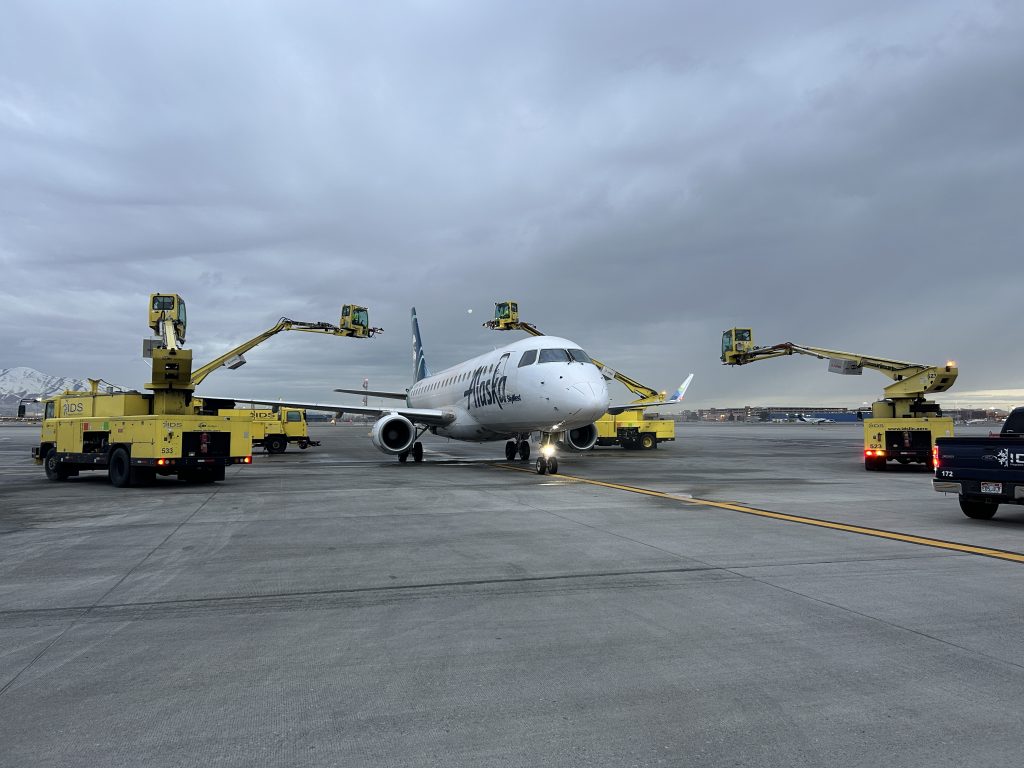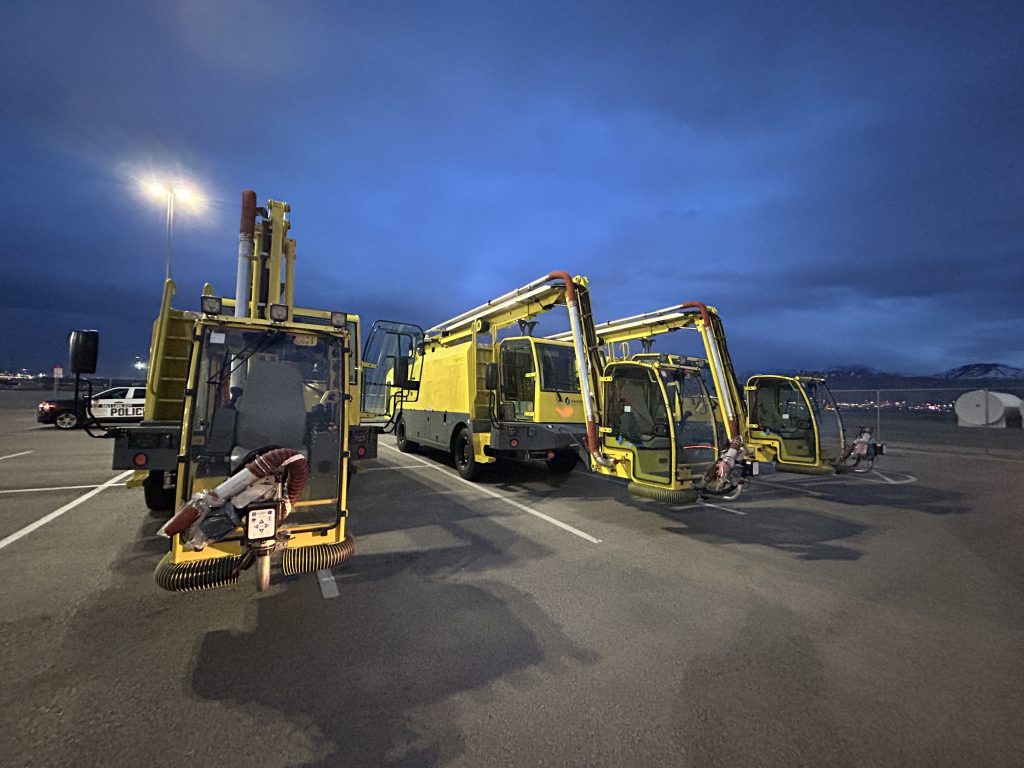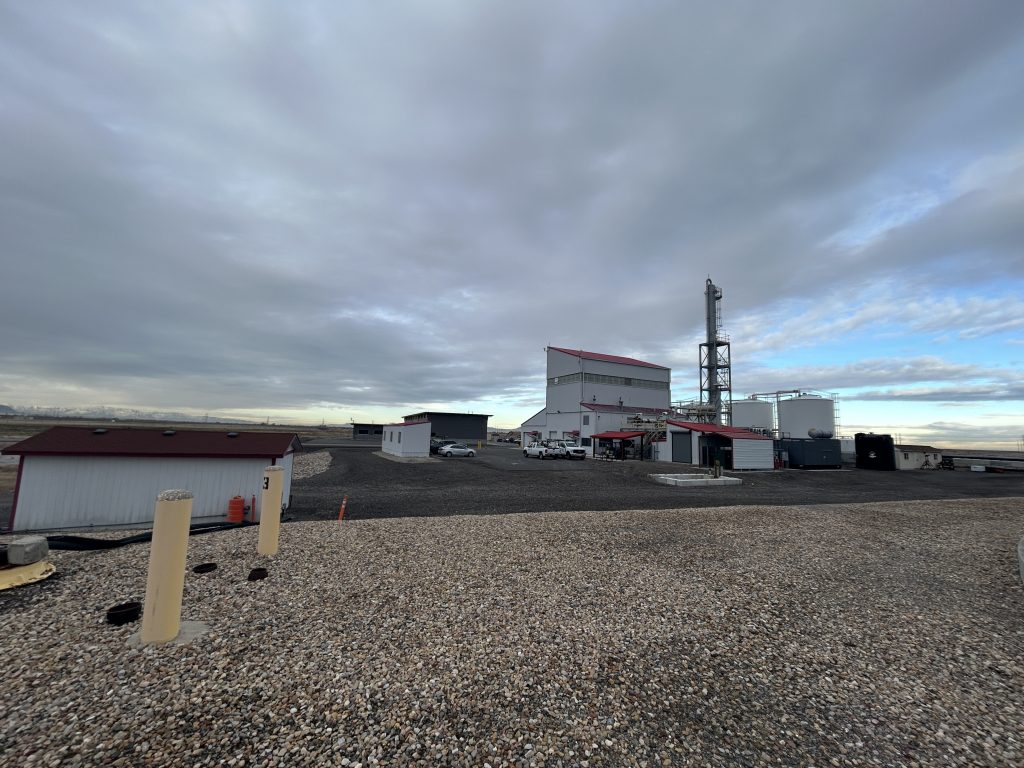Deice, Deice Baby? | Deicing from Start to Finish at SLC

With the tagline of “The Greatest Snow on Earth,” Utah is no stranger to frigid winter conditions. At Salt Lake City International Airport (SLC), a team of dedicated individuals head up deicing efforts to ensure that planes are able to takeoff and land safely and efficiently.
When cold weather creates ice on the body of an aircraft, it taxis to one of several deicing pads located at the south end of the runways. Randy Hubbell, general manager for Integrated Deicing Services (IDS), leads the deicing efforts for most of SLC airlines.
“Up to four deicing trucks will simultaneously spray the aircraft, coating it first with Type 1 glycol. Type 1 glycol removes any snow and ice,” Hubbell said. “Planes can then be coated with Type 4 glycol, which prevents ice from adhering to the plane during taxiing and takeoff.”

Surprisingly, it takes the deicing trucks only between three to five minutes to deice a plane.
On an “easy” day, when snow is light and it’s not quite as cold, it may take as little as 50 gallons of glycol to deice a plane. But on heavy snow and ice days, deicing trucks may use a few thousand gallons per aircraft. On average, SLC uses 600,000 gallons of glycol each year. But during the record-breaking snowfall of 2022-2023, SLC purchased 2.6 million gallons of glycol.
While most of the glycol sprayed onto the planes stays on the aircraft, one may wonder what happens to excess deicing fluid.
Miles of underground pipes
In 1998, SLC installed an underground piping system as an initial step toward reclaiming and recycling glycol. Just a few years later in 2001, the airport opened a Glycol Reclamation Plant for operation.
An underground drainage system includes six pumping stations and five miles of piping. Any fluid that lands on the ground—glycol as well as precipitation—is pumped to the Glycol Reclamation Plant, located two miles north of the deicing pads.

The fluid is pumped into three storage lagoons just outside of the plant. Each lagoon holds up to 3.4 million gallons of fluid. Specialists in the plant move the fluid from these lagoons through a three-step process to remove impurities and water from the propylene glycol. This reclaimed glycol is then sold and reused in products such antifreeze and paint.
Glycol Reclamation Plant Manager Kelly Clark has been at the plant since its inception in 2001. “The most gratifying thing for me is that I’ve been here from start to finish,” Clark said. “We took it from just a small storage plant and turned it into a full-blown production facility. It’s taken a lot of effort from a lot of people.”
On-site, from Start to Finish
During the processing period, the plant runs 24 hours a day during the week, stopping operations on the weekends. At least one plant operator must be present at all times while fluid is processing. On average SLC reclaims and sells 120,000 gallons of glycol every year. While other airports also reclaim and sell used glycol, SLC is the only airport to perform all three steps of the process on-site.
From start to finish, SLC is doing its part to not only ensure passengers can get where they need to go safely, regardless of winter conditions, but to also support sustainability efforts in the aviation industry. To learn more about SLC’s sustainability efforts, visit our website: https://slcairport.com/about-the-airport/community-and-environment/

